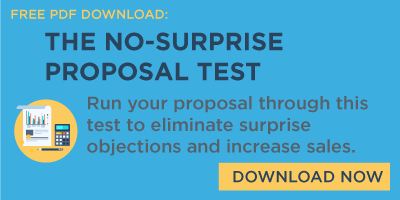 Over the last couple of months, I have had a number of clients share with me that they lost out on a couple of large deals that they had felt pretty strongly about. In each of those scenarios, my first question was, "Do you know why?" More often than not, the answer to my question was, “I’m not sure.”
Over the last couple of months, I have had a number of clients share with me that they lost out on a couple of large deals that they had felt pretty strongly about. In each of those scenarios, my first question was, "Do you know why?" More often than not, the answer to my question was, “I’m not sure.”
Anyone who has ever been in a sales position has received a “no” in their career – most likely more than they would like – it comes with the job. But, it is what you do with the “no” that separates the best from the rest. Diagnosing where you may have gone wrong in the sales process can help to minimize making the same mistake in the future.
Begin by determining why you got a "no" in the first place, and if it’s something that you can easily resolve, do it. If it is not something you can easily resolve, examine these three potential problem areas to try and turn the "no" into a "yes," or use it as a learning exercise for the future.
Look for problems leading up to the proposal.
Consider all of the activity you put into the account prior to the proposal – go back to the beginning.
- Ask yourself if this was a good prospect to begin with – did you go through the sales process with a prospect that wasn’t worth your time?
- Did you connect with the appropriate decision maker and did you take the time to understand their decision-making process?
- Was your proposal focused on the right desired business result – did you get confirmation that it was the top priority to focus on?
- Did you clearly communicate how your tailored solution will deliver on the desired business results
- Did the right decision makers buy-in to your solution? Did you get them to agree with you on 2-4 ways success will be measured?
Examine potential problems with your proposal.
Now take a look at the proposal that you presented to your prospect or client.
- We recommend a specific proposal template, did you use it?
- Is the focus on the desired business result they wanted to achieve? Did you include a title page focused on their desired results? Did you clearly state them in your proposal?
- Did you incorporate and list the 2-4 measures of success that you agreed on?
- Was your solution presented in the context of how it will influence the consumer journey?
- Did you include a Critical Path that outlined what both parties did leading up to the proposal and the plan to execute and deliver once they say yes?
- Did you ask for a commitment and include a date to create urgency?
Lastly, consider potential problems that occurred while presenting your solution.
Think about the actual proposal meeting and ask yourself the following questions:
- Did you ask for the business?
- Did you use mini-closes along the way?
- Were there any decision influencers that you failed to identify during the sales process?
- Did you fail to ask questions that might have brought potential objections to the surface that should have been discussed?
- Did you struggle with an objection raised in your meeting?



